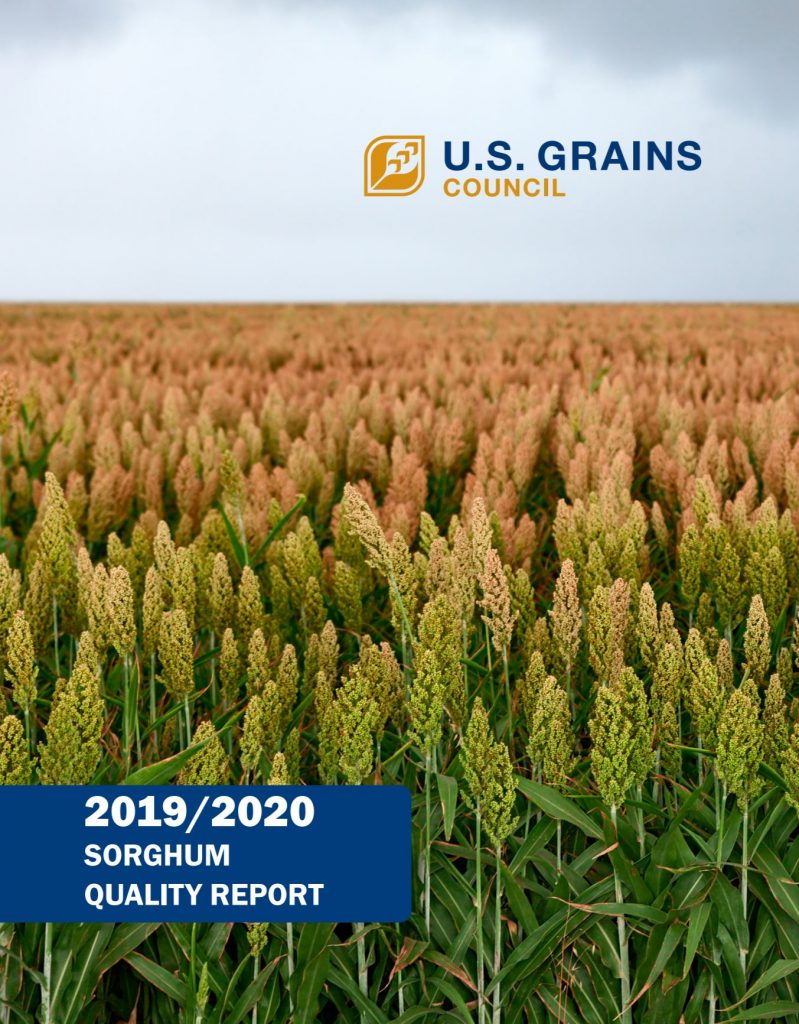
The U.S. Grains Council (USGC) has published its 2019/2020 Sorghum Quality Report touting an average grade well above the necessary requirements for U.S. No. 1 sorghum.
“We are very pleased to offer this report as a guide so foreign buyers and industry stakeholders can make more informed purchasing decisions about U.S. sorghum,” said USGC Chairman Darren Armstrong, a farmer from North Carolina. “We are confident this report will help further global food security and mutual economic benefits through trade.”
The report, funded through the U.S. Department of Agriculture’s Foreign Agricultural Service (USDA’s FAS) Agricultural Trade Promotion (ATP) program, provides international customers and other interested parties accurate, unbiased information about the 2019 U.S. sorghum crop.
To generate the report’s findings, a total of 62 samples were collected from outbound shipments of U.S. country elevators and analyzed for the grade factors established by USDA as well as chemical composition and other quality characteristics not reported elsewhere.
The report pulled samples from the two largest and most comprehensive growing areas in the United States, including the growing areas in Texas, Kansas, Nebraska, Missouri, Illinois, Oklahoma, Arkansas, Louisiana, South Dakota, Colorado, New Mexico and Mississippi. Sorghum samples were collected from individual outbound rail or truck shipments at participating elevators across the two regions, then sent to Texas A&M University for chemical composition and physical factor analysis. Scientists there calculated averages and standard deviations for each quality factor tested and reported results for the U.S. aggregate.
Total sorghum damage came in at just 0.2 percent, and broken kernel and foreign material (BNFM) was only 1.7 percent, highlighting how hard the grain is and how well it holds up during handling and storage.
Non-detectable tannins are important because they signify the U.S. sorghum crop is a good feedstuff option, something competitors, especially in Argentina, cannot claim. The 2019/2020 crop also fared well on this measure.
“We were very pleased to share that both broken kernel and foreign material rates were very low, and tannins were undetectable in every sample tested in this year’s sorghum crop,” Armstrong said. “These quality characteristics offer great benefits over our global sorghum competitors.”
This report is the first since the 2016/2017 sorghum crop. The Council plans to roll out the information through webinar distribution around the world and will also present the information during a virtual sorghum conference for the Chinese market in early July.
“This report is helping fulfill the Council’s mission to help make something happen for U.S. grains around the world,” said Armstrong. “We hope the 2019/2020 Sorghum Quality Report provides valuable information about the quality of U.S. sorghum and shows our valued trade partners that the United States is a trusted supplier.”
About The U.S. Grains Council
The U.S. Grains Council develops export markets for U.S. barley, corn, sorghum and related products including distiller’s dried grains with solubles (DDGS) and ethanol. With full-time presence in 28 locations, the Council operates programs in more than 50 countries and the European Union. The Council believes exports are vital to global economic development and to U.S. agriculture’s profitability. Detailed information about the Council and its programs is online at www.grains.org.
